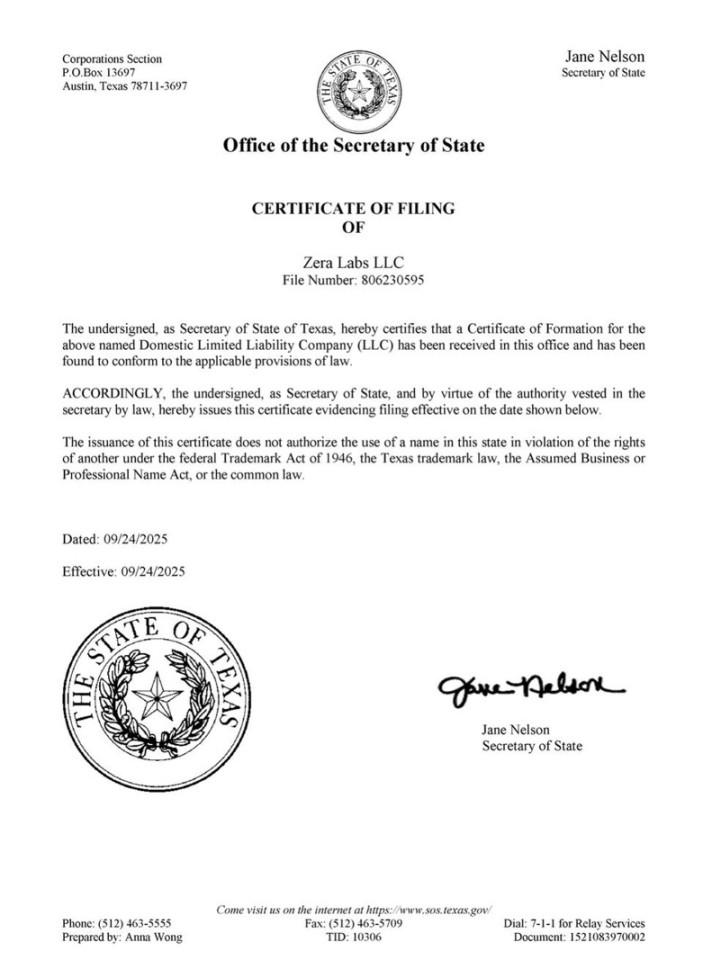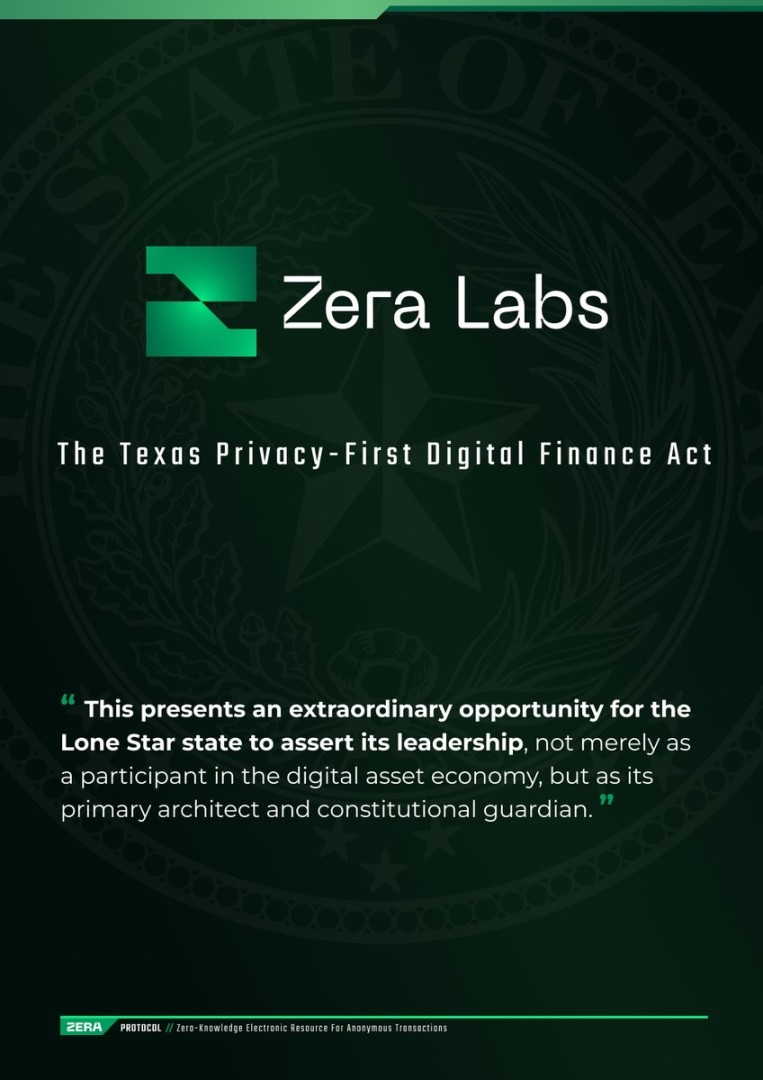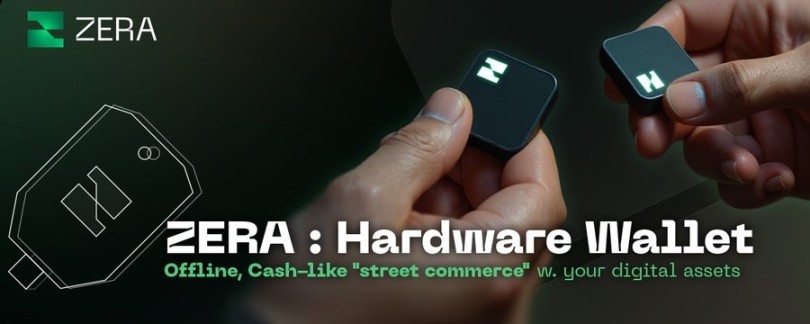A token born from Meme culture is trying to evolve into infrastructure.
Written by: Nicky, Foresight News
Traditional privacy coins attempt to solve the issue of "hiding on-chain," but rarely address a more practical question: if currency is essentially a right certificate that can be physically transferred, how does digital currency flow off-chain?
The emergence of ZERA is an attempt to fill this gap. Recently, privacy sector tokens have performed strongly, with ZERA's maximum increase exceeding 150% this month, currently valued at approximately $27 million.
ZERAs predecessor was M0N3Y ("Monopoly Money"), a completely community-driven Meme token. The early token design emphasized circulation and community participation, with no VC allocation and 100% circulation. As the team clarified their vision for privacy, zero-knowledge (ZK), and digital cash, they aimed to transform the project from a purely speculative community into a long-term operational privacy protocol, while the old token system could not support the new project requirements.
The token migration began on September 25 and ended on October 2. On the day of the migration's completion, M0N3Y's market cap peaked at $40 million, attracting significant investor attention, but the market cap of ZERA, which successfully migrated on the same day, remained around $25 million, a drop of 37%. Some early investors in the community expressed shock at the significant drop caused by the migration; however, other investors view ZERA as one of the few attempts to shift the Meme community towards infrastructure development.
ZERAs is launched by Zera Labs and operates on Solana, positioned as a zero-knowledge privacy layer aimed at converting users' existing assets into private, offline transferable digital cash. Unlike traditional privacy coins, ZERA employs a direct deposit structure, allowing users to enjoy privacy protection without needing to convert their assets into project tokens.
Users can convert USDC, USDT, SOL, etc., into a "digital note" based on cryptographic commitments, which can be transferred offline and ultimately settled through on-chain zero-knowledge proofs. In other words, it attempts to bridge "blockchain transactions" with "real-world settlements," enabling digital currency to possess the portability of cash while retaining the credibility of on-chain verification.
ZERAs combines cryptographic primitives such as the Poseidon hash function, Groth16 zero-knowledge proofs, and Pedersen commitments. Its core lies in achieving offline peer-to-peer transaction capabilities, allowing value transfers via NFC, Bluetooth, or QR codes without requiring an internet connection.

ZERAs was initially launched as an academic research project, planned to be published in the form of a doctoral thesis, but community support prompted its shift towards commercial development, gradually transitioning to a corporate operation led by developer Dax. He previously worked at MetaMask and various tech companies, including Twitter, and has a background in finance and engineering. He has also caught the attention of Solana co-founder toly. Other team members have limited public information, but they have announced plans to recruit senior engineers through public channels to support subsequent product development.

Unlike many privacy projects, ZERA does not center its narrative on "resisting regulation." Zera Labs actively engages in policy initiatives, including promoting Texas's "Privacy-First Digital Financial Bill" draft, attempting to establish a legal framework for crypto credentials, selective disclosure, and cryptographic proofs.
In the design of the token economic model, ZERA attempts to directly link "usage behavior" with "token supply contraction." When users mint assets into credentials, they need to consume and destroy a certain proportion of ZERA tokens, and may also need to collateralize additional assets to protect the liquidity pool. When liquidity is insufficient or the burn path is restricted, the protocol retains a mechanism to repurchase tokens from the secondary market for destruction. This model is still in the parameter experimentation phase, and the final ratio will be adjusted based on on-chain usage data and governance discussions.
The token M0N3Y was initially launched on the pump.fun platform, with a total supply of 1 billion tokens, all in circulation and with no team or venture capital allocation. In October of this year, M0N3Y completed a 1:1 token migration to ZERA. The main reason for the migration was that the old contract structure lacked native support for burn and repurchase mechanisms, and could not flexibly adjust split ratios, verification functions, and multi-asset compatibility, thus limiting the protocol's ability to build supply elasticity in the new phase. The migrated token contract allows a portion of the protocol's transaction fees to be used for market repurchases and supports dynamic destruction based on usage rather than fixed inflation or static distribution.
At the same time, ZERA has gradually shifted from relying on community contributions to supporting R&D through liquidity pool fees, migrating the pool from Raydium to Meteora/DAMM v2 to ensure that fee income flows back into R&D itself.

In terms of product form, ZERA does not merely position itself as "a wallet." The current demo version primarily facilitates asset conversion, offline transfer, and re-online settlement through a browser. The team plans to gradually launch desktop and mobile versions and explore hardware devices with NFC, placing proof generation and key management on local chips to reduce reliance on centralized clients. The ultimate plan is to release hardware wallet devices to achieve a fully offline "street commerce" scenario.
The long-term vision is to build a complete zero-knowledge privacy stack, providing developers with software development kits and application programming interfaces, extending privacy protection capabilities to wallets, commerce, and decentralized finance application scenarios. The project also plans to explore advanced features such as privacy exchanges, over-the-counter trading settlements, and shielded liquidity provision.
ZERAs originated from Meme but seeks to break away from the Meme narrative. After the frenzy of M0N3Y, the price crash, community divisions, and migration turmoil, ZERA chooses to shift its focus from "speculative consensus" to "usability consensus." Making "Meme" truly usable, even as a foundational layer for real-world settlements.
免责声明:本文章仅代表作者个人观点,不代表本平台的立场和观点。本文章仅供信息分享,不构成对任何人的任何投资建议。用户与作者之间的任何争议,与本平台无关。如网页中刊载的文章或图片涉及侵权,请提供相关的权利证明和身份证明发送邮件到support@aicoin.com,本平台相关工作人员将会进行核查。




